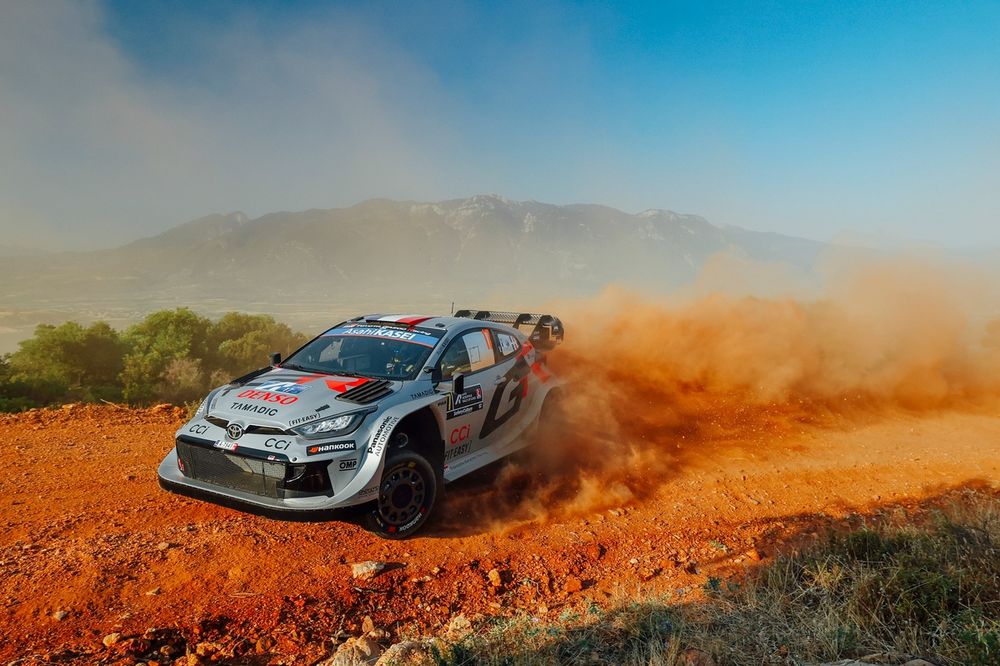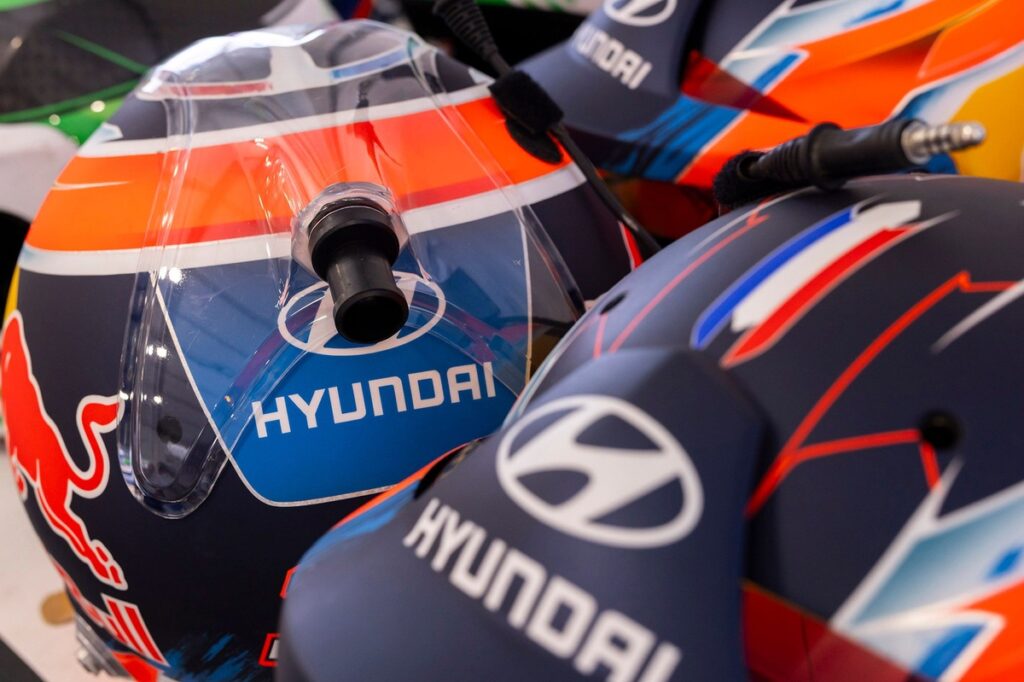Hyundai will debut a new driver cooling system to help combat the searing heat at this weekend’s Acropolis Rally Greece, as cockpit temperatures are predicted to reach almost 70 degrees Celsius.
The World Rally Championship’s annual visit to Greece is often regarded as one of the toughest events on the calendar due to its punishing rough gravel stages and extreme heat.
Both of these factors appear to be far more challenging this year as the 17-stage event has moved back to its more traditional June date, having rejoined the WRC calendar in 2021 in a September slot, when temperatures are slightly cooler.
This year weather forecasts predict ambient temperatures to hover around 37 degrees for the majority of the weekend, which will be almost double inside the cockpit, creating challenging conditions for drivers and teams. The lack of recent rainfall has also been a contributing factor in increasing the roughness of the stages.
Teams in the recent past have fitted reflective roofs or paint schemes to direct heat away from Rally1 cars, which are known to produce high cockpit temperatures due to the design of its exhaust.
To help ease the conditions for its drivers this weekend, Hyundai will run a helmet cooling system for the first time in competitive action. The system features a pipe that channels air from the roof vent of the i20 N, which is connected to the driver’s helmet.
“It is going to be tough, it is going to be challenging for us, especially the crews in the car and also the cars themselves. We know when the temperatures are high the mechanical parts are suffering even more,” Hyundai’s Thierry Neuville told Autosport/Motorsport.com.
“We have a cooling system for the helmet which we are using. We have been testing it before Kenya already and I’m going to try it this weekend and hopefully it will bring something at least.
Thierry Neuville, Hyundai World Rally Team
Photo by: Vincent Thuillier / Hyundai Motorsport
“On a long stage I don’t know how it will work, but on the shakedown you could feel the cold air blowing through but does it really keep the head cool I don’t know.”
Hyundai team-mate Adrien Fourmaux, added: “It is the first time I have used it [the system] and it is just air coming from outside that comes through a few holes in the helmet. I tried it on the test and it was working for me, some drivers like it some drivers don’t.
“The [team] were working to protect the bulkhead of the car but in the end when you have the sun and the 40 degrees outside they can do whatever they want, the car will be really warm. If it is 40 [degrees] outside it will be 70 [degrees] inside and maybe even more.
“It [the heat] is going to be the big topic I would say and when we have a chance to stop in between stages I will try to do so in the shadows under the trees. We are going to have to stay hydrated so we will be drinking a lot. I’m pleased to see that after shakedown, that there was a lot of water, so that is positive.”
Decreasing the effects of the intense heat in the cockpit was among the reasons why Toyota swapped its black livery for a silver paint scheme from May’s Rally Portugal.
Toyota driver Sebastien Ogier admitted that the temperatures crews will face this weekend are among the hottest he’s ever experienced. The eight-time world champion revealed that there is currently little the teams can do to combat the heat.
“I remember a rally in Jordan where it has been very hot, but I think it all depends on the speed you have in the stages,” Ogier told Autosport/Motorsport.com. “If the stages are technical then it is very, very difficult as there is very little airflow coming into the cockpit which is making it very tiring. Tomorrow should be the hardest day with the stages being at lower altitude.

Sébastien Ogier, Vincent Landais, Toyota Gazoo Racing WRT Toyota GR Yaris Rally1
Photo by: Toyota Racing
“There is not much we can do but of course we will try to have as much airflow as you can in the cockpit. Obviously nobody has any air conditioning so sometimes the airflow coming into the car feels like a hair dryer. There are not so many miracles you can do.
“If there would be more events like this then teams would consider putting air conditioning systems into the cars. Let’s see how we survive tomorrow, but I’m sure it will be extreme in some moments.”
Ogier’s team-mate Kalle Rovanpera elaborated on the challenge ahead: “We have only three litres in the camel bag and some [water] after the stages, you drink all of that but it is never enough. I don’t think we can stay fully hydrated and even on the road sections you are sweating all the time.
“It is not physically so much harder, it is just we don’t have enough air coming into the car and the brain starts to melt inside the helmet, the biggest thing we feel is the head getting so hot.”
M-Sport’s Josh McErlean revealed that he conducted some special training exercises to prepare for the heat this weekend.
“It is going to be tough for man and machine and it is probably the toughest on crew this year to date,” McErlean told Autosport/Motorsport.com. “I did some work in a sauna and wore extra clothes when training to try and build up and replicate the heat so hopefully that has done something small.
“We will see how it goes as I don’t think these Rally1 cars have driven in such heat.”
In this article
Tom Howard
WRC
Toyota Racing
M-Sport
Hyundai Motorsport
Be the first to know and subscribe for real-time news email updates on these topics
Subscribe to news alerts
Read the full article here

